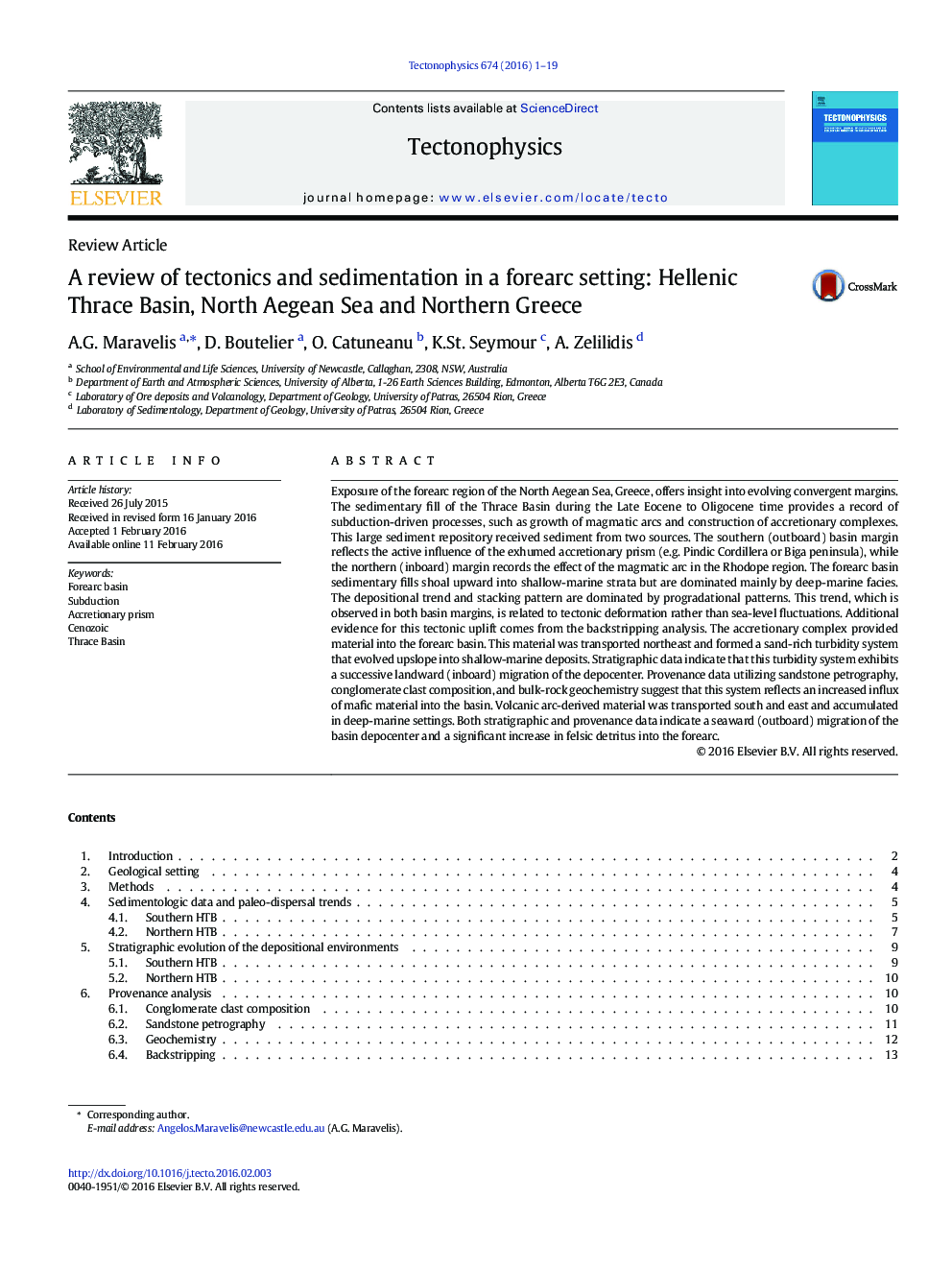| Article ID | Journal | Published Year | Pages | File Type |
|---|---|---|---|---|
| 6433462 | Tectonophysics | 2016 | 19 Pages |
â¢The Thrace Basin in the Hellenic domain is the focus of the study.â¢We test arc magmatism and accretionary prism exhumation in the forearc basin.â¢The multi-faceted approach classifies the basin as a two-sided forearc basin.â¢The analysis documents tectonic uplift and compression in the southern Thrace Basin.
Exposure of the forearc region of the North Aegean Sea, Greece, offers insight into evolving convergent margins. The sedimentary fill of the Thrace Basin during the Late Eocene to Oligocene time provides a record of subduction-driven processes, such as growth of magmatic arcs and construction of accretionary complexes. This large sediment repository received sediment from two sources. The southern (outboard) basin margin reflects the active influence of the exhumed accretionary prism (e.g. Pindic Cordillera or Biga peninsula), while the northern (inboard) margin records the effect of the magmatic arc in the Rhodope region. The forearc basin sedimentary fills shoal upward into shallow-marine strata but are dominated mainly by deep-marine facies. The depositional trend and stacking pattern are dominated by progradational patterns. This trend, which is observed in both basin margins, is related to tectonic deformation rather than sea-level fluctuations. Additional evidence for this tectonic uplift comes from the backstripping analysis. The accretionary complex provided material into the forearc basin. This material was transported northeast and formed a sand-rich turbidity system that evolved upslope into shallow-marine deposits. Stratigraphic data indicate that this turbidity system exhibits a successive landward (inboard) migration of the depocenter. Provenance data utilizing sandstone petrography, conglomerate clast composition, and bulk-rock geochemistry suggest that this system reflects an increased influx of mafic material into the basin. Volcanic arc-derived material was transported south and east and accumulated in deep-marine settings. Both stratigraphic and provenance data indicate a seaward (outboard) migration of the basin depocenter and a significant increase in felsic detritus into the forearc.
